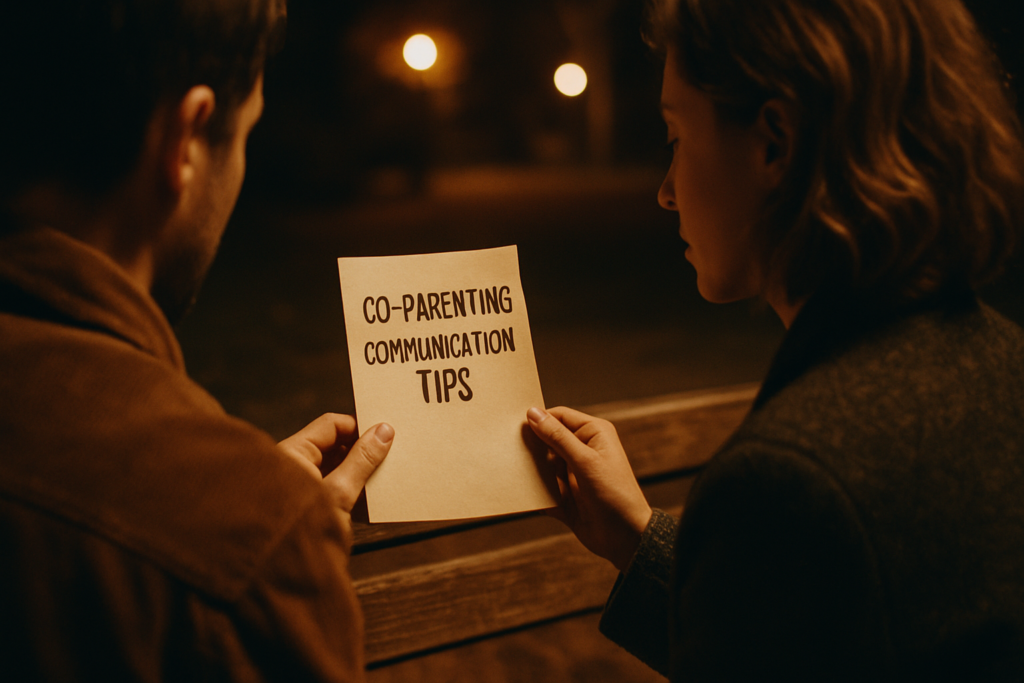Navigating co-parenting dynamics can be a challenging journey, with different approaches offering unique solutions. In the realm of co-parenting, two prevalent methods, parallel parenting, and co-parenting, stand out as contrasting strategies to manage post-divorce or separation parenting responsibilities.
As I delve into the nuances of parallel parenting versus co-parenting, we’ll explore the distinct characteristics of each approach and shed light on which might align best with your circumstances. In this article, I’ll break down the key differences between parallel parenting and co-parenting, providing insights into the benefits and challenges of each.
By understanding the fundamental principles of these two approaches, you can make an informed decision on which strategy resonates most with your situation. Whether you’re seeking a more structured or flexible co-parenting arrangement, knowing the intricacies of parallel parenting and co-parenting is essential in determining the right path forward for you and your children.
Understanding Parenting Styles
In discussing parenting styles, it’s crucial to comprehend the fundamental differences between parallel parenting and co-parenting. These two strategies offer distinct approaches to post-divorce parenting, each with its unique features, advantages, and challenges.
By grasping the nuances of these parenting styles, individuals can better determine which method aligns more closely with their individual circumstances and preferences.
Parallel Parenting
When it comes to parallel parenting, it involves high levels of disengagement between the parents. This approach is structured, focusing on minimizing direct contact and communication to reduce conflict. Each parent operates independently within their own spheres of authority.
Definition and Characteristics
In parallel parenting, the key feature is the minimal communication between co-parents. It allows for separate and distinct parenting styles and decisions to be made without interference from the other parent.
The focus is on creating a structured and low-conflict environment for the children by reducing interaction between the parents.
Pros and Cons
Pros:
- Provides a clear structure for parenting responsibilities.
- Minimizes conflict between parents, creating a more stable environment for children.
- Allows for individual parenting styles to flourish without interference.
Cons:
- Limited communication can lead to challenges in coordinating important decisions.
- Children may struggle with the lack of a unified parenting front.
- Can create a sense of emotional distance between parents and children due to the lack of interaction between the co-parents.
Co-Parenting
Co-parenting involves parents working together and actively participating in their children’s lives despite the end of their romantic relationship. It requires regular communication, shared decision-making, and a focus on the children’s well-being.
Definition and Characteristics
Co-parenting is a collaborative parenting style where both parents maintain involvement in their children’s upbringing, aiming to create a stable and supportive environment for them. This approach emphasizes open communication, mutual respect, and a child-centered focus. It involves shared decision-making on important aspects of the child’s life, such as education, healthcare, and discipline. Successful co-parenting often requires flexibility, compromise, and a commitment to prioritizing the children’s needs above personal differences.
Pros and Cons
Pros:
- Positive Impact on Children: Co-parenting provides children with stability, consistency, and emotional support from both parents, promoting their well-being and development.
- Effective Conflict Resolution: By fostering open communication and cooperation, co-parenting can help resolve conflicts peacefully and prevent disputes from negatively affecting the children.
- Shared Parenting Responsibilities: It allows both parents to share the joys and challenges of parenting, ensuring that children benefit from the unique qualities and strengths of each parent.
- Parental Involvement: Co-parenting encourages active involvement from both parents in important decisions and milestones in their children’s lives, promoting a sense of security and belonging.
Cons:
- Challenges in Communication: Effective co-parenting requires consistent and respectful communication, which can be challenging, especially in the aftermath of a divorce or separation.
- Potential for Conflict: Differences in parenting styles, values, or personalities may lead to disagreements and conflicts between co-parents, affecting the cohesiveness of the parenting approach.
- Emotional Strain: Managing emotions and dealing with past relationship issues while co-parenting can be emotionally demanding and may impact individual well-being.
- Logistical Complexities: Coordinating schedules, parenting plans, and transitions between households can be complex and require a high level of organization and cooperation.
Factors to Consider
When deciding between parallel parenting and co-parenting, several crucial factors should be evaluated to determine the most suitable approach for your circumstances. By considering these key aspects, you can make an informed decision that aligns with your parenting goals and preferences.
Level of Communication
In parallel parenting, minimal direct communication between parents is a defining feature. This limited interaction can be beneficial in reducing conflict but may pose challenges when important decisions need to be made concerning the children.
On the other hand, co-parenting necessitates open and frequent communication to ensure both parents are actively involved in decision-making and coordinating parenting responsibilities.
Conflict Resolution Skills
Effective conflict resolution is vital in both parallel parenting and co-parenting. While parallel parenting aims to minimize conflict by limiting direct contact, co-parenting requires parents to navigate disagreements constructively for the well-being of the children.
Assessing your ability to handle conflicts amicably can influence your choice between these two approaches.
Parenting Styles Alignment
Understanding how your parenting styles complement or differ from each other is crucial in determining the compatibility of parallel parenting or co-parenting. In parallel parenting, each parent operates independently, adhering to their unique parenting methods.
In contrast, co-parenting relies on shared decision-making and a cooperative approach to parenting, which may require more alignment in parenting philosophies.
Child’s Needs and Well-being
Central to the decision between parallel parenting and co-parenting is the consideration of what is in the best interest of the children. Assessing how each approach may impact your children’s emotional stability, sense of security, and overall well-being is essential.
Factors such as consistency, emotional support, and a united parental front play significant roles in this evaluation.
Logistics and Scheduling
The practical aspects of parenting after divorce, such as managing schedules, coordinating transitions between households, and organizing shared responsibilities, are critical considerations. Co-parenting often requires more coordination and communication regarding logistics compared to parallel parenting, where autonomy is prioritized over shared logistics planning.
Emotional Dynamics
Exploring the emotional dynamics involved in both parallel parenting and co-parenting is essential. Parallel parenting may lead to emotional distance between parents and children due to limited interaction, while co-parenting typically involves more emotional engagement and support for children.
Understanding how these dynamics may impact family relationships is vital in determining the most suitable approach. By carefully evaluating these factors, you can better assess whether parallel parenting or co-parenting is the right approach for you and your children after a divorce.
Considering your communication preferences, conflict resolution abilities, parenting styles, children’s needs, logistical capabilities, and emotional dynamics will guide you in making an informed decision that supports your family’s well-being and stability.
Making the Right Choice
Considering the complexities of parallel parenting and co-parenting, it’s crucial to evaluate which approach aligns best with your post-divorce parenting needs. When deciding between these strategies, it’s essential to assess key factors that can impact your family’s dynamic and well-being. Here are some considerations to help you make the right choice:
- Communication Level: In parallel parenting, minimal direct communication is the norm to reduce conflict. On the other hand, co-parenting requires consistent and open dialogue between parents. Assess your comfort level with communication dynamics to determine the most suitable approach for your situation.
- Conflict Resolution Skills: Parallel parenting aims to minimize conflict by limiting interaction. Co-parenting, however, necessitates effective conflict resolution strategies. Consider your ability to navigate disagreements and determine which style complements your conflict resolution skills.
- Parenting Style Alignment: While parallel parenting allows for independent parenting styles, co-parenting requires alignment on key decisions. Reflect on your parenting philosophies and understand which approach supports your preferred style while considering the child’s best interests.
- Child’s Needs and Well-being: Prioritize your child’s emotional stability and overall well-being when choosing between parallel parenting and co-parenting. Consider which approach can best meet your child’s needs and provide a nurturing environment post-divorce.
- Logistics and Scheduling: Evaluate the logistics and scheduling complexities involved in co-parenting, including coordinating transitions and managing shared responsibilities. Compare this with the more structured approach of parallel parenting to determine the logistical feasibility for your family.
- Emotional Dynamics: Reflect on the emotional dynamics between you and your co-parent, as well as how each approach may impact your relationship with your child. Consider how emotional distance or closeness may influence your child’s adjustment and well-being in the long run.
By weighing these crucial factors thoughtfully, you can make an informed decision that promotes stability and harmony in your post-divorce parenting journey. Evaluate your preferences, capabilities, and the well-being of your child to choose the approach that best suits your unique circumstances.




